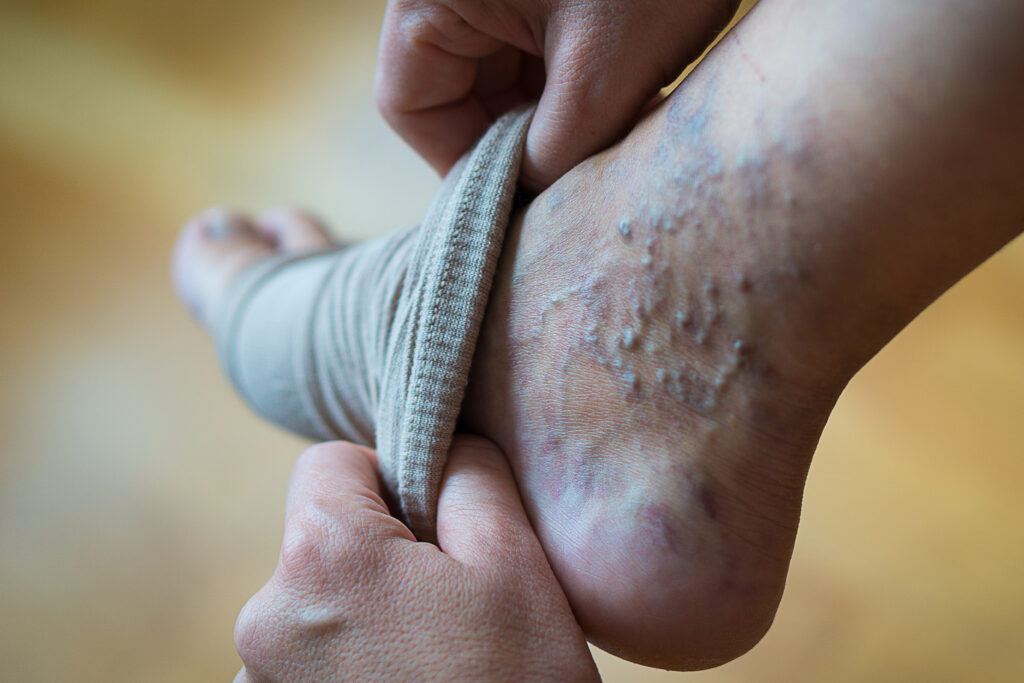Venous disease is a common condition that affects millions of people worldwide. It occurs when veins in the legs or other parts of the body become damaged or weakened, leading to symptoms such as swelling, pain and heaviness. Luckily, there are several treatment options available. One of the most effective and widely recommended approaches is compression therapy.
Compression therapy involves the use of specially designed garments, such as compression stockings or sleeves, to apply controlled pressure to the affected area. This pressure helps improve blood flow and reduce swelling by preventing blood from pooling in the veins. In addition to managing and improving existing symptoms of venous disease, compression therapy can also serve as a preventative measure – especially for those who spend long periods of time sitting or standing white at work or during athletic activities.
Types of Compression Therapy
The most common types of compression therapy methods and devices include:
- Compression stockings – The most common type of compression apparel. These stockings usually go up to the knee, but can extend higher depending on where the swelling is occurring.
- Wraps and bandages – For those who may have difficulty putting on compression socks, velcro wraps and elastic bandages are an effective alternative.
- Inflatable devices – Mostly used by athletes, these garments fully cover the legs and inflate to provide pressure.
Benefits of Compression Therapy
Key benefits of compression therapy include:
- Reduced symptoms – One of the primary advantages of compression therapy is the relief it provides from the uncomfortable symptoms of venous disease. The pressure exerted by compression garments helps reduce swelling, pain and heaviness in the legs. It can also alleviate other symptoms like itching and cramping, allowing individuals to engage in daily activities with greater comfort.
- Improved circulation – Compression therapy plays a crucial role in enhancing blood circulation. By applying pressure to the veins, it helps to stimulate the flow of blood back toward the heart. This can be particularly beneficial for individuals with venous disease, as it prevents blood from stagnating and reduces the risk of complications such as blood clots or venous ulcers.
- Non-invasive and non-pharmacological – Compression therapy is a non-invasive and non-pharmacological treatment option, which means it does not require any surgical procedures or medications. This makes it a safe and accessible choice for a wide range of individuals. It can be easily incorporated into daily routines and adjusted according to the specific needs of each person.
- Versatile and convenient – Compression garments come in various styles, lengths and compression levels. They can be worn discreetly under clothing, which makes them convenient for individuals who wish to continue their regular activities without drawing too much attention. Compression therapy can also be used in conjunction with other therapies to optimize results.
Venous Disease Treatment at CVT
At CVT Surgical Center, our practice is committed entirely to providing the most advanced treatment of vascular issues, including venous disease. CVT Surgical Center has been a leader in the care of vascular disorders since 1957. Drs. Mike Davis, Michael Conners, James McNeil, Gulrez Mahmood and Matthew Abate provide state-of-the-art management of all aspects of vascular disease.

